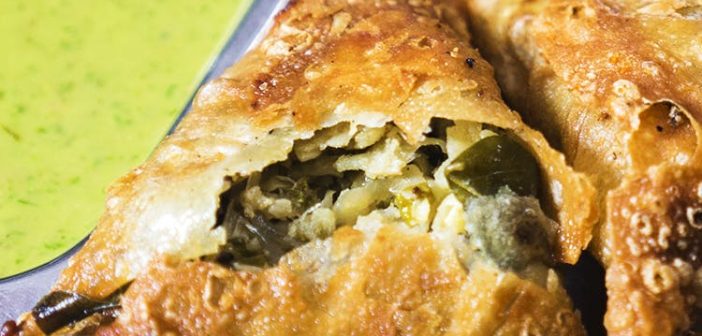When it comes to Indian street food, the samosa is a favorite snack that transcends cultural and geographical boundaries. However, among the many regional variations, the Puneri Samosa from Pune stands out for its distinct taste and preparation. Unlike the more commonly known North Indian samosa, which is heavier with a filling of spiced potatoes and peas, the Puneri Samosa brings a lighter, crispier twist that reflects Pune’s unique culinary heritage.
Origin and Evolution
Pune, known as the cultural capital of Maharashtra, has long been a melting pot of influences from different regions of India. The Puneri Samosa is said to have evolved over decades, influenced by both Maharashtrian flavors and the traditional samosa from North India. While samosas have been popular across India for centuries, the version that took hold in Pune has been adapted to suit the local palate and lifestyle.
What Makes Puneri Samosa Different?
The key factor that differentiates the Puneri Samosa is its filling and the thin crust. While North Indian samosas are often filled with boiled potatoes and peas, spiced with cumin and garam masala, the Puneri Samosa is filled with a dry, spiced mixture that includes grated coconut, crushed peanuts, and poha (flattened rice). This gives the samosa a unique, slightly nutty flavor, with a lighter, less greasy filling.
1. Filling
The filling of the Puneri Samosa is what truly sets it apart. The use of peanuts and poha adds a subtle crunch, while the absence of heavy potato makes the samosa feel lighter. The filling is usually dry and flavored with coriander, cumin, and sesame seeds, along with a hint of tamarind to add a tangy twist. This not only gives it a distinctive flavor but also makes it easier to carry and consume, catering to Pune’s fast-paced urban life.
2. Crust
The outer crust of the Puneri Samosa is thinner and crispier compared to the thicker, flaky crust of traditional samosas. This lighter crust enhances the eating experience, providing a satisfying crunch without being too greasy or heavy. The samosas are typically fried in small batches to ensure freshness, giving them an irresistible texture.
3. Serving Style
The Puneri Samosa is often served with a unique chutney made from tamarind, dates, and jaggery, offering a sweet and tangy flavor that complements the samosa’s savory filling. Unlike the North Indian version, which is commonly served with green chutney or yogurt, this chutney pairs perfectly with the nuttiness of the peanuts and the crispiness of the samosa.
Cultural Significance
Samosas in Pune have become more than just a snack—they are part of the city’s culinary identity. Found in local bakeries, tea stalls, and cafes, Puneri Samosas are a go-to snack for locals during tea time or as a quick bite on the go. They are also popular at social gatherings, family functions, and festivals like Ganesh Chaturthi, where they are often served as part of the festive spread.
Popular Spots for Puneri Samosa
While you can find Puneri Samosas across the city, certain places have earned a reputation for serving the best versions. These include iconic outlets like Vaishali on Fergusson College Road and Vada Pav and Samosa stalls near Pune Station, which are frequented by both locals and tourists alike.
Health Considerations
Compared to its North Indian counterpart, the Puneri Samosa is considered to be slightly healthier due to its lighter filling and thinner crust. The use of peanuts and coconut provides good sources of plant-based proteins and healthy fats, while the dry nature of the filling makes it less oily. However, like any deep-fried snack, moderation is key.
Conclusion
The Puneri Samosa is a wonderful example of Pune’s ability to take a classic Indian snack and give it a local twist. Its light filling, crisp exterior, and unique flavor make it a beloved street food in the city. Whether enjoyed with a cup of chai at a roadside stall or during a social gathering, this samosa continues to hold a special place in Pune’s vibrant food culture.






